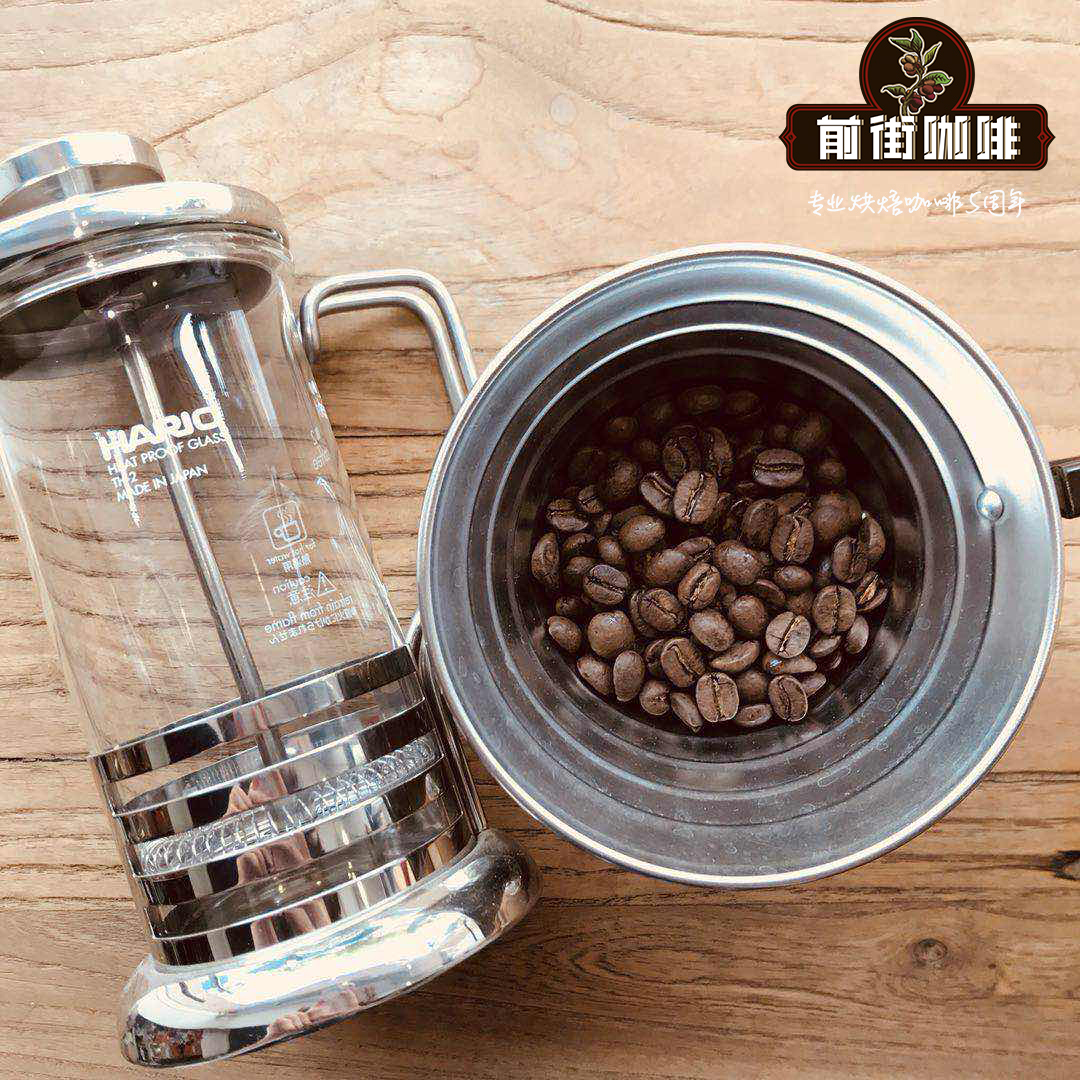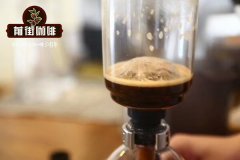Mokha San'ani Coffee Region| Ancient solarization Local native mocha species Jaa'

Professional coffee knowledge exchange more coffee bean information please follow the coffee workshop (Wechat official account cafe_style)
Sunani Mokha San'ani Coffee producing area | what is the flavor of the native mocha species Jaa'di,Taffahi,Dawairi in ancient sun treatment?
Mokha San'ani is a mixed bean from tens of thousands of small farms on the hillside near the capital San'a. Planted at a slightly lower altitude than Madali, generally speaking, it tastes thinner and less acidic, but it has a good fruit flavor and often has better ripe fruit and wild game than Madali. According to experience, the quality of Sanani varies greatly, and sometimes there are inferior products with flat flavor, fishy smell and excessive fermented flavor. Careful cup testing and selection is a must for coffee importers to do their homework and absolutely not to be lazy. In fact, Yemen is located on the Arabian Peninsula of the Asian continent, very close to Africa as long as it crosses the Red Sea and the Gulf of Aden Gulf of Aden, but other Arab countries do not produce coffee, so the world classifies Yemeni coffee as African coffee. Mocha is the export port of Yemeni coffee, because it is difficult to name all the tiny sub-producing areas in the history of coffee trade, even though the coffee produced by these insignificant small producing areas is very good, so it is named after the place of export. the sun beans nearby, including East Africa, were exported from the port of Mocha to all parts of the world in the early days, and now the port of Mocha has long been silted up and disappeared. Many Ethiopian sun beans are also named mocha, such as the Haramoka we know, because its flavor has something in common with Yemeni coffee.
Yemen was the first country to use coffee as a cash crop. Legend has it that Muslim Sufi pilgrims were introduced from Ethiopia in the 6th century. The most correct spelling should be Al-Mahka, which is the Arabic spelling, growing on steep terrain with little rainfall, poor land and insufficient sunshine. This unique and difficult condition for coffee growth has given birth to an irreplaceable Yemeni mocha. Most of the wild Yemeni beans are unmanaged, grow naturally and then mature and dry, farmers only do the work of picking up, the overall style is [wild] or [natural] with high complexity, and for some people it is spicy, but you must try it sometime anyway, if you fall in love with him deeply, it will be the beginning of a whole new coffee journey. Yemeni Sanani is located in the capital area, where coffee is grown on terraces. There is no data to verify the wild varieties. Shannani's biggest feature is raw beans with a fermented wine aroma, which is not found in other countries after being calm and full of fermented wine.
Compared with the washing method used in most coffee producing areas in the world, Yemeni coffee is completely sun-treated, and the process of stone grinding (crushing with two stone mills) makes chopped beans mixed, resulting in an irregular appearance. Raw beans are often mixed with twigs, small stones and even sun-dried insects (which are screened out during baking). It also has the most unique, rich and fascinating complex smell in the world: "Red wine, wild game, dried fruit, blueberries, grapes, cinnamon, tobacco, sweet spices, logs and even chocolate." You can see all kinds of adjectives used to describe Yemeni mocha!
Because of the sun-dried pulp, the flavor of the coffee berries has a chance to "seep" into the coffee beans, and when the coffee fruit falls on the dry soil of the African plateau, it will also absorb the smell of the surrounding organic matter. In addition, the "sun smell" given by the fierce winter sun in the Arabian Peninsula (you can smell a similar smell on the sunburned quilt), the naturally fermented ripe fruit flavor of the flesh, a little earthy flavor. There are 300,000 coffee plantations ranging from 3000 to 8000 feet above sea level, as well as ancient, 100% organic treatments that make the Yemeni mocha unique in the world.
Coffee Characteristics: coffee characteristics
Variety varieties: 10 special native mocha species are mainly Jaa'di,Taffahi and Dawairi.
Processing System treatment: Method Red ripe cherries dried on Africa Bed ripe cherry fruits were dried in an African (sun) elevated bed.
Harvest period harvest time: the main crop harvest period is from October to December, and the second harvest is in April in some producing areas.
Aroma aroma / flavor flavor: banana, spices, cinnamon, cloves, bergamot, maple syrup, longan, chocolate
Acid value: citrus, plum, cherry, tartaric acid
Complex complexity and other other: rose perfume, fresh milk-like taste mellow, caramel sweet taste, long-lasting fruit wine, Yemeni Sanani beans full of wine acidity, woody aroma less fermented fruit-based, low aroma close to the entrance rhyme is the strength of Yemeni coffee.
A confusing name
There are no general guidelines for the naming of Yemeni coffee, and there is no official grading system. Local residents have their own classification system, with hundreds of coffee codes and names for internal classification, but it is not applicable to commercial markets (for export). In the commercial market, the Yemeni mocha is usually named in one of two ways: "place name", or "tree species name".
Take several Yemeni mochas that have been sold as an example: Yemeni Mokamadali Mokha Mattari and Yemeni Mokasanani Mokha San'ani are produced from Bani Matar province and the hillside near the capital San'a, respectively, while Yemeni Mokayishi Mary Mokha Ismaili adopts the "tree species naming method", which is produced in Hirazi southwest of Bani Matar.
It is worth mentioning that Ismaili is both a name of an ancient Yemeni tree species and a place name, which is often confusing and difficult to distinguish. The only way to know whether the Mokha Ismaili you purchased refers to tree species or place names is to ask your supplier. Generally speaking, we mark it as follows: Yemen Mokha Ismaili (Hirazi) indicates the origin in parentheses is relatively clear.
Qianjie coffee is recommended for brewing:
Filter cup: Hario V60
Water temperature: 88 degrees
Degree of grinding: small Fuji degree of grinding 4
Cooking methods: the ratio of water to powder is 1:15, 15g powder, the first injection of 25g water, 25 s steaming, the second injection to 120g water cut off, waiting for the powder bed water to half and then water injection, slow water injection until 225g water, extraction time about 2:00
Analysis: using three-stage brewing to clarify the flavor of the front, middle and back of the coffee. Because the V60 has many ribs and the drainage speed is fast, it can prolong the extraction time when the water is cut off.
Important Notice :
前街咖啡 FrontStreet Coffee has moved to new addredd:
FrontStreet Coffee Address: 315,Donghua East Road,GuangZhou
Tel:020 38364473
- Prev

Peru Amazonas Amazon Vera Rika Manor _ Peruvian Organic Coffee is Fine Coffee
Professional coffee knowledge exchange more coffee bean information please pay attention to the coffee workshop (Wechat official account cafe_style) Peruvian Coffee Pasco Osapomba Vera Rica Manor Huang Cadura seed sun treatment sweet solid aromas of wine, mango, peach, passion fruit and heart guava. The mouth is full of intoxicating aromas of wine, berries, peaches, rum grapes, flowers,
- Next

Introduction of the best coffee beans in the Amazon region of Peru-raccoon shit coffee _ Peruvian coffee
Professional coffee knowledge exchange more information about coffee beans Please follow the coffee workshop (Wechat official account cafe_style) Peruvian coffee sounds unknown and has few fans. In fact, Peru is a big coffee grower and has a good flavor. Peru is located in western South America, with a coastline of 2254 kilometers. The Andes run from north to south, with mountains accounting for 1/3 of the country's area.
Related
- Detailed explanation of Jadeite planting Land in Panamanian Jadeite Manor introduction to the grading system of Jadeite competitive bidding, Red bid, Green bid and Rose Summer
- Story of Coffee planting in Brenka region of Costa Rica Stonehenge Manor anaerobic heavy honey treatment of flavor mouth
- What's on the barrel of Blue Mountain Coffee beans?
- Can American coffee also pull flowers? How to use hot American style to pull out a good-looking pattern?
- Can you make a cold extract with coffee beans? What is the right proportion for cold-extracted coffee formula?
- Indonesian PWN Gold Mandrine Coffee Origin Features Flavor How to Chong? Mandolin coffee is American.
- A brief introduction to the flavor characteristics of Brazilian yellow bourbon coffee beans
- What is the effect of different water quality on the flavor of cold-extracted coffee? What kind of water is best for brewing coffee?
- Why do you think of Rose Summer whenever you mention Panamanian coffee?
- Introduction to the characteristics of authentic blue mountain coffee bean producing areas? What is the CIB Coffee Authority in Jamaica?

